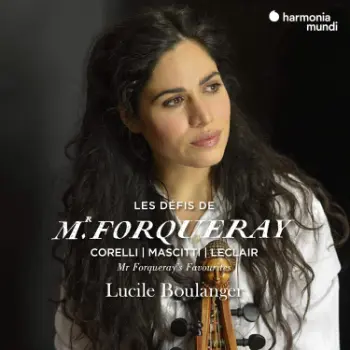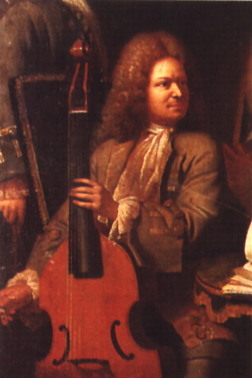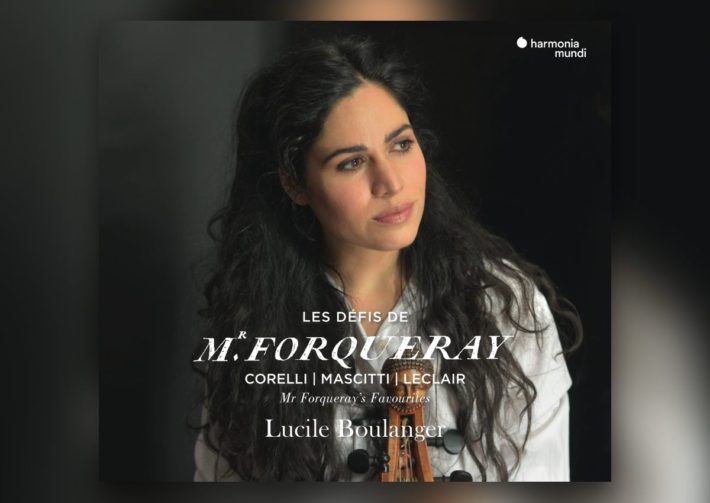This one is something special. Antoine Forqueray (1672-1745), a French Baroque composer and Viola da Gamba master, is the center of this fascinating album. Lucie Boulanger chose pieces which this rather forgotten figure either played or composed. Some are transcribed from violin to Viola da Gamba, other written specifically for the Viola.

The opening bars of the sonata by Michele Mascitti, which opens the album, one can only describe as seductive: The depth, long line and beauty of tone is just that irresistible. Boulanger projects well the contrasts of this Sonata, with lively fast movements and serene slow ones.
Jean-Marie Leclair’s Violin Sonata Op.9 No. 2 will make many listeners want to hear some more of this composer, especially after another very well received release by Fabio Biondi last year, playing Violin Concertos by this important figure. This sonata is a rarity in the catalogue and makes a stunning introduction – listen how beautiful is the opening andante (a true manifestation of the “dolce” instruction if I ever heard one) or how subtle the phrasing and ornamentation are in the third Sarabande movement.
The Sonata Op. 5, No. 3 by Corelli can be subjected to real record comparison: There is a very successful account of the Op. 5 Sonatas by Andrew Manze and Richard Egarr, a more uncomfortable version by the Kuijiken brothers and a “classic” version by Arthur Grumiaux. The comparison is a fascinating one; Yes, there is the transcription for Viola da Gamba from the original Violin manuscript, which makes the basso-continuo more naturally integrated with the soloist. But there is also a unique approach in its own right. The second movement Allegro, for one, is a high spirited dance-like affair, and the Adagio, unlike on any of the other versions, is presented bare, without accompaniment.
It’s worth mentioning the outstanding Continuo group we have here (Clair Gautrot, Romain Falik, Pierre Gallon), which time and again give their full-hearted support to their charismatic soloist, with little individual touches here and there – Listen for instance how the bass is giving its weight in the final movement of the Corelli Sonata (1:50), in order to emphasize this dramatic episode.

The main and longest piece in this album, the Fourth Suite by Forsqueray, is represented on record, but plainly speaking, I know of no other better performance. Atsushi Sakaï’s dedicated complete account of the entire suites on Aparté sounds pale in comparison. Once again, Boulanger opts for solo playing in the Thirds Sarabande movement, to chilling effect. These two solo renditions make the following “La Bournonville. Mouvement élevé” movement, well, elevating. And the group can dance as well; Listen to the outburst of the earthy rhythmic energy in the last movement of this suite (from 2:30).
These contrasts here and in the rest of this marvelous suite move from the dramatic, energetic, tense and playful to the profound, thoughtful and atmospheric, giving us a true journey through this music, providing a good case for Forqueray the composer as well as the genius violist he must have been.
Superb album, then, packed with great music at 76 minutes, presented with a good background information and an exemplary recording quality, on par with Harmonia Mundi’s best. Highly recommended.

Album Details |
|
|---|---|
| Album name | Les Défis de Monsieur Forqueray |
| Label | Harmonia Mundi |
| Catalogue No. | HMM902330 |
| Artists | Lucile Boulanger (viola da gamba), Pierre Gallon (clavecin), Claire Gautrot (basse de viole), Romain Falik (théorbe) |



















